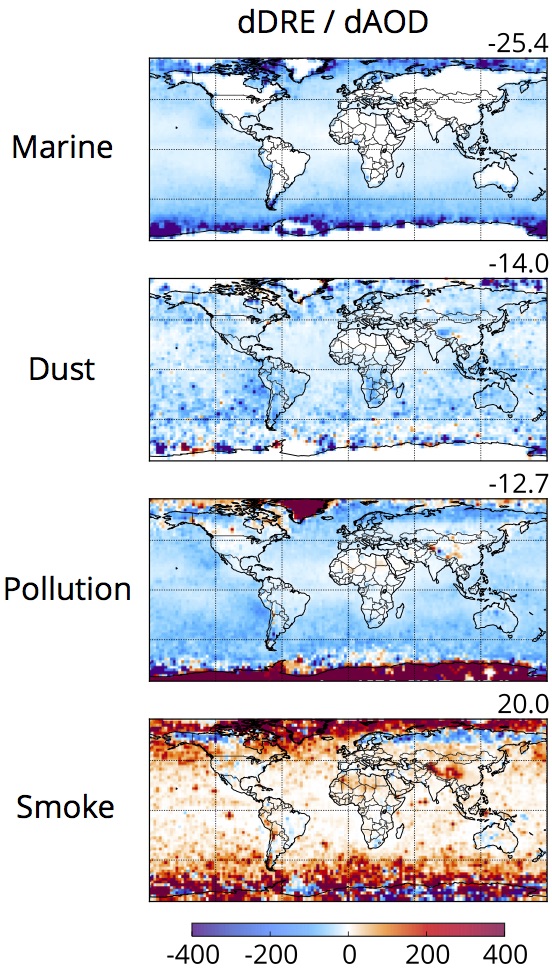Radiative kernels
Response of DRE to changes in AOD
Atmospheric aerosols - airborne liquid and/or solid particles - are a critical source of uncertainty in climate science. Aerosols can change Earth's radiation balance by scattering and absorbing sunlight. Whereas most aerosols scatter sunlight which cools the atmosphere, some aerosols (including soot and dust) absorb sunlight which warms the atmosphere.
The changes in solar radiation due to the presence of aerosols are known as direct radiative effects (DRE). This quantity, DRE, is dependent on the amount of aerosol in the atmosphere, or aerosol optical depth (AOD). As the AOD increases, the radiative impact of aerosol also increases. However, not all aerosol types have the same impact on global energy flows. Some aerosol types are highly effective at scattering sunlight while others are more effective at absorbing sunlight. To better understand the climate impacts among different aerosol types we may use a powerful tool known as radiative kernels.
Radiative kernels represent the change in radiative flux in response to a change in another variable, as described by Soden et al., 2008. In this study, we are interested in the change in outgoing solar radiation (DRE) in response to a change in aerosol concentrations (AOD). Fortunately, it is now possible to obtain estimates of these variables using satellite observations. Global estimates of aerosol DRE are computed using a multi-sensor satellite dataset using CloudSat, CALIPSO, and MODIS called 2B-FLXHR-LIDAR. The AOD is estimated using CALIPSO for various aerosol types: marine, dust, polluted continental, polluted dust, and smoke. In this analysis, both polluted continental and polluted dust categories have been consolidated into one category called pollution. The figures below show preliminary results of these kernel calculations for four aerosol types.
For more information about the CloudSat 2B-FLXHR-LIDAR product, please refer to the official documentation from the CloudSat Data Processing Center. A complete description of this work is provided in my PhD dissertation, "Aerosol direct radiative effects and heating in the new era of active satellite observations".
All kernel data are available for download HERE.
